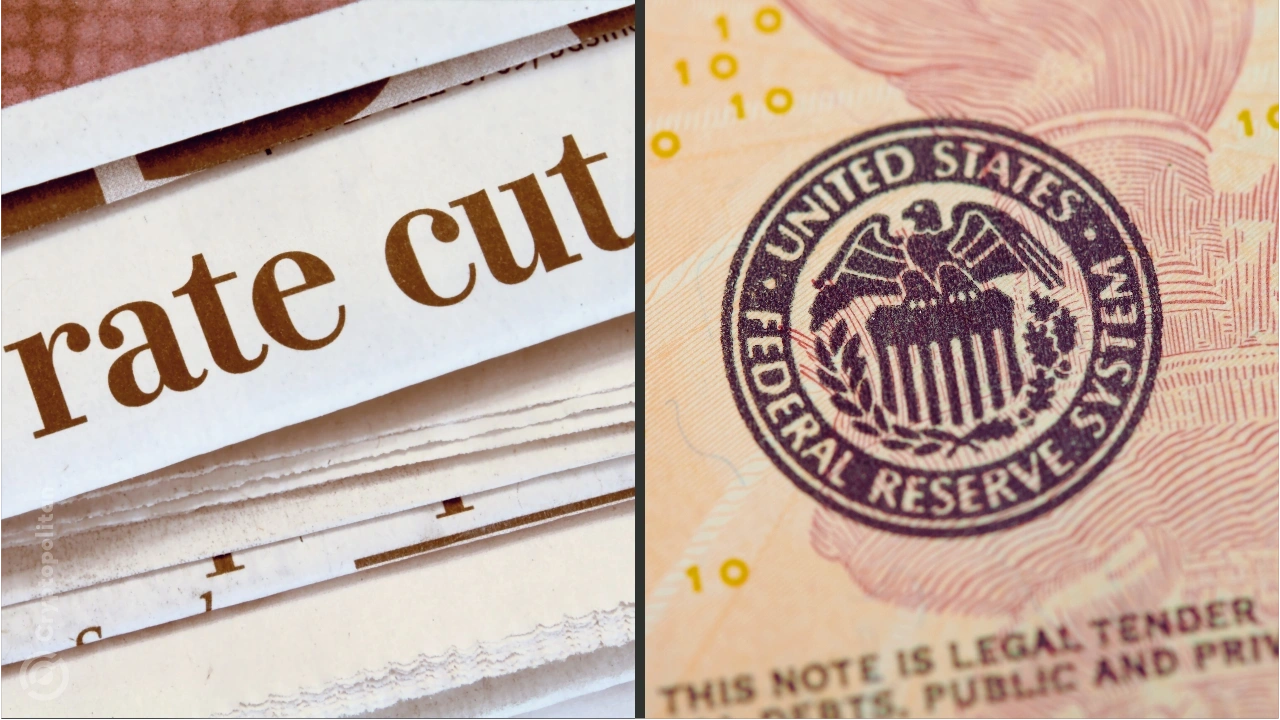A FED economic report, expected to be released on December 12, could highlight stalled progress in curbing inflation in the United States. Economists are uncertain whether the data will dissuade the Federal Reserve from implementing a widely expected interest rate cut during its policy meeting next week.
According to recent updates from Trading Economics, the annual inflation rate in November has climbed to an expected 2.7%, a modest increase from October’s 2.6%, marking the second consecutive month of rising inflation.
BREAKING: November CPI inflation RISES to 2.7%, in-line with expectations of 2.7%.
Core CPI inflation was 3.3%, in-line with expectations of 3.3%.
Headline CPI inflation is now at its highest level since July 2024.
Inflation has leveled off above the Fed's 2% target.
— The Kobeissi Letter (@KobeissiLetter) December 11, 2024
Analysts attribute part of the uptick to low base effects from the previous year. On a month-to-month basis, the Consumer Price Index (CPI) is forecast to rise by 0.3%, surpassing October’s 0.2% increase and marking the highest monthly gain since April.
The CPI rise, per a CNBC report, is primarily driven by higher prices for used cars, airfares, apparel, and car insurance. Gasoline prices, in contrast, are expected to show a slight decline.
Core inflation, which excludes volatile food and energy prices, remained steady at 3.3% year-over-year, with monthly core inflation also holding at 0.3%, matching the rate observed in October.
CPI index suggests US inflation numbers will go up
The CPI, a broad measure of the cost of goods and services across the U.S. economy, serves as a key gauge of inflationary pressures. The Dow Jones consensus estimate aligns with other forecasts, showing a 2.7% year-over-year increase in November’s CPI. This slight acceleration would challenge the Federal Reserve’s goal of achieving its target inflation rate of 2%.
“Looking at these measures, there’s nothing in there that says the inflation dragon has been slain,” commented Dan North, senior economist at Allianz Trade Americas. “Inflation is still here, and it doesn’t show any convincing moves towards 2%.”
The upcoming inflation report will be closely followed by another significant data release: the Producer Price Index (PPI). Scheduled for December 14, the PPI, which tracks wholesale prices, is expected to show a modest 0.2% monthly gain. Together, these reports will provide critical insights into the current trajectory of inflation in the U.S.
Opinion poll: Federal reserve’s could cut rates
Despite the stubborn inflation figures, the Federal Reserve is widely expected to lower interest rates by 25 basis points at its December 18 meeting. This would bring the federal funds rate to a range of 4.25% to 4.50%.
According to a Reuters poll, 90% of economists anticipate the rate cut, bolstered by recent labor market data that signaled cooling but resilient conditions.
The Fed will likely cut rates next week even though inflation is running at over 3% annually.
Why?
I have no idea. Because the market wants it?
It’s become a clown show at this point.
Theres no justifiable reason to cut rates imo.
But they will.
— QE Infinity (@StealthQE4) December 11, 2024
The U.S. job market’s slower pace of growth, alongside steady income and employment gains, has reassured policymakers that the economy can withstand another rate cut before the Fed takes stock of potential shifts in government policy next year.
“With the jobs report showing more slack despite solid income and job gains, we reiterate our call for another 25bp Fed cut in December,” said Jonathan Millar, senior U.S. economist at Barclays. Miller believes interest rate futures have already priced at a likelihood of a quarter-point reduction.
Future monetary policy views
Meanwhile, a majority of surveyed analysts believe the Fed will hold rates steady at its January meeting, scheduled just over a week after President-elect Donald Trump’s inauguration on January 20.
Concerns about rising inflation risks under Trump’s proposed economic policies, including import tariffs and tax cuts, could influence the central bank’s decisions.
“They (the Fed) are going to wait to see what happens next year, what is actually implemented versus what is kind of presented as a risk,” noted Stephen Juneau, a U.S. economist at Bank of America.
The Federal Reserve’s long-term goal is to bring interest rates to a neutral level, estimated at around 2.9%. Fed Chair Jerome Powell recently stated that policymakers “can afford to be a little more cautious” as they strive to find a neutral rate, citing a stronger-than-expected economy and inflation rates exceeding earlier forecasts.
The U.S. economy expanded at an annualized rate of 2.8% in the last quarter, and economists forecast growth of 2.1% in 2025 and 2% in 2026. These rates surpass the Federal Reserve’s estimate of the non-inflationary growth rate of 1.8% over the coming years. However, inflation concerns persist.
From a majority of financial economic experts polled by Reuters, 75% believe there is a high risk of inflation resurging next year.
Moreover, David Seif, Nomura’s senior economist for developed markets, cautioned that core inflation could rise significantly above 3% by mid-2025. Seif linked the rise to higher tariffs and potential supply chain disruptions likely to result from aggressive trade policies under the incoming Trump administration.
From Zero to Web3 Pro: Your 90-Day Career Launch Plan





